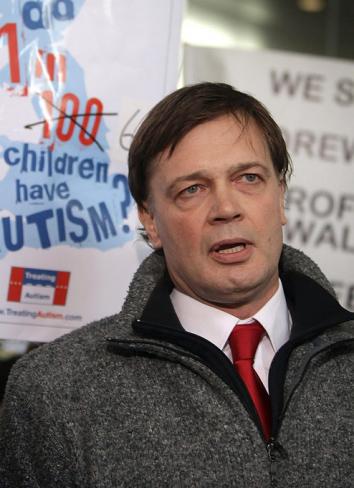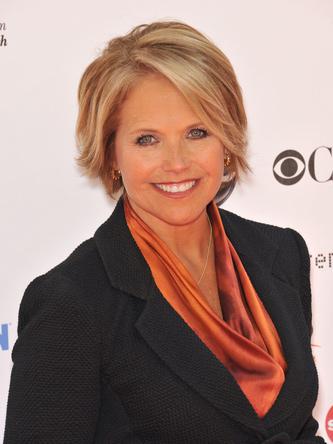On Wednesday, the daytime talk show Katie, hosted by Katie Couric, had a segment on the safety of Gardasil, a vaccine against the human papillomavirus, or HPV. This virus has been directly linked with cervical cancer, which kills 4,000 women in the United States alone every year. I’ve written about this vaccine many, many times, discussing its safety, and about various anti-vaccination groups that have fought against it. I will be clear from the start: I am highly skeptical, even critical, of these anti-vax claims, as everyone should be. Over a hundred million doses of the vaccine have been administered, and very strong studies have been done that have shown no link to either short- or long-term health problems.
To be even more clear: My wife and I did our research on Gardasil, and decided it was safe enough for our own daughter to get the vaccine.
The segment on Katie was both better and worse than I had hoped; better in that it did have some solid advice and info, and worse in that the program was very sympathetic to the anti-vaccination claims of some of its guests. Just as I did expect, the segment was loaded with anecdotes with no real evidence to support the anti-vaccination claims.
Post Hoc Is NOT Ergo Propter Hoc
It opened well, with Couric saying her daughters were up to date on their vaccines. But things slid downhill quickly thereafter.
Couric’s first guest was Emily Tarsell, whose daughter Christina died at the age of 21 after receiving Gardasil. Although Tarsell couldn’t give details due to an ongoing lawsuit, she did say Christina suffered a rash, fatigue, and dizziness after the series of shots. Christina died 18 days after her third shot.
As a parent myself, I cannot even begin to comprehend the horror of losing a child, and my heart goes out to Tarsell and anyone who has gone through something like this. But that doesn’t change the fact that correlation does not mean causation. Just because Christina had these symptoms after the shots does not mean they were caused by the shots, much less that the shot caused her death. Given how many tests the vaccine underwent before (and after) approval, the burden of proof of harm falls on the people who claim there was harm. This was not established at all during the segment; the claims were all anecdotal.
A very similar situation occurred in 2009, when a girl died shortly after receiving the vaccine, and claims were made the vaccine was the cause of death. However, it was later found the girl died due to a pre-existing cancerous tumor in her chest. The vaccine was not involved at all.
I’ll note that Tarsell is director of Gardasil network development for the National Vaccine Information Network, a noted anti-vax group I have written about before; they wanted to get anti-vax ads running on Delta airlines in-flight TV, for example (you can read more about that at Harpocrates Speaks), as well as in Times Square in New York City. NVIC has also tried to sue its critics into silence in the past. Needless to say, I don’t feel that NVIC is a reliable source of information on vaccines, having shown a historical bias against them. Tarsell’s involvement with them is worth considering.
Couric also discussed the vaccine with Dr. Diane Harper, who was a clinical investigator during the Gardasil studies. I was wary; the anti-vax movement has in the past used Harper’s words to make it seem like she is virulently anti-vax, but her stance is clearly more nuanced. Still, I wasn’t thrilled with some of what she said on the show.
She raised concerns about the efficacy of the vaccine—how effective it is, which is different from how safe it is—and asked parents to weigh the benefit versus “harm.” I put that word in quotation marks because doctors I’ve talked to always say “benefits versus risk,” which is very different. There is no proven harm to the Gardasil vaccine, although of course there is always risk to any procedure. However, as I pointed out above, the risk is extremely small.
There’s more she said I wasn’t happy with (like that the shot isn’t long-lasting; the CDC disagrees); but I’ll direct you to my Slate colleague Amanda Marcotte, who has more on this (as well as clips from the TV show).
The Plural of Anecdote Isn’t Data

Photo by Peter Macdiarmid / Getty Images
Couric talked to another young woman who claimed to have had an adverse reaction—again, anecdotally. Her mother, Rosemary Mathis, was also on the show, and interestingly she is the director of a group called SaneVax (you can read more about them at Orac’s blog). Although they claim to “promote only Safe, Affordable, Necessary & Effective vaccines and vaccination practices,” they link to a video interview with Andrew Wakefield, who is essentially the father of the modern anti-vax movement, as well as Robert F. Kennedy, Jr. RFK Jr. wrote an anti-vax article for Salon magazine so laden with errors they eventually pulled it. I also wrote about his anti-vax stance recently, and followed up when my editor talked to him personally after he complained about my article. The fact that SaneVax links to these men in their page about “Vaccine Safety” is clear indicator of their bias on the topic.
A Faint Light at the End of the Tunnel
Another doctor, Mallika Marshall, was also on the show, and this is where things got better. Dr. Marshall gave solid advice about vaccination and HPV, even stating that correlation is not causation. She also made the point that even though some cases of HPV do clear up on their own, it will persist in 10 to 20 percent of people who contract it, putting them at risk for cancer. Given how low the risk is for the vaccine, it is absolutely worthwhile to immunize as many people as possible. As she said, we should do this to “protect society at large,” which is really what vaccines are all about.
Finally, Couric chatted briefly with a mother and daughter who had the full course of vaccine with no ill effects at all. That was nice, but after showing very sympathetic interviews with the others, it seemed like an afterthought to the whole segment.
Balance? I Don’t Think That Word Means What You Think It Means.
The real problem with this entire segment on the “Katie” show was the false balance: The idea that there are two sides to this story. That is grossly unfair; the evidence is vastly on the side of the vaccine having extremely little risk, and no solid evidence at all that it causes harm. It’s not as though the research on this is split. Dedicating most of the segment to the stories of people who claimed it harmed them is not real balance or responsible journalism. Given too that people tend to be more sympathetic to those who have suffered, this segment was incurably biased. People who watch it are, in my opinion, very likely to become scared of a vaccine based on bad evidence. Seth Mnookin, author of the excellent book The Panic Virus (which discusses the rise of the anti-vax movement), calls the segment “fear-mongering.” I strongly urge you to read what he wrote about it.
The bottom line about all this, despite the confusion from the Katie show, is clear:
The HPV vaccine has been tested both for effectiveness and safety, and it has been shown to be an effective preventative measure against the virus with extremely small risk. No fatal injury due to the vaccine has ever been proven, and in fact the evidence presented in cases where girls died is anecdotal; no link to the vaccine other than timing (which can be coincidental) has been presented.
Let me put it this way: I’m glad my own daughter got her vaccination against this awful virus, and now, years later, if I had to do it all over again, I would.
[Correction (Dec. 5 at 16:30 UTC): In a paragraph in the original article, Christina Tarsell, the young woman who died, was listed as “Emily”, her mother’s name. I apologize for this mistake.]
